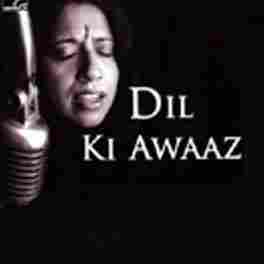Contribute
| Music Review - Kavita Krishnamurthy’s: Dil Ki Awaz |
Priya Kumar
03/07/2007
(This article is sponsored by Sounds Of India)
While listeners have been accustomed to
hearing Kavita Krishnamurthy render a wide range of Bollywood film
songs, such as the peppy “Hawa Hawai†from Mr. India, “Nimbooda†from
Hum Dil De Chuke Sanam ,and more recently “Main Vari Vari†from Mangal
Pandey, music lovers now have more to look forward to from the
classically trained South Indian singer. Krishnamurthy has now added
popular music in her repertoire of songs, and has two albums to her
credit.
Her most recent album release
is “Dil ki Awazâ€, or Voice of the Heart. However, “Dil Ki Awaz†is not
the typical youngster-friendly pop album, with loud drum beats and
lyrics meant for dancing on. Instead, Krishnamurthy’s songs are more
like seven slow ballads, one for each emotion. While listening to the
songs, viewers can experience a different situation, whether it is
happiness, sadness, love or agony. Of course, Krishnamurthy’s album is
more suited for audiences who can understand and appreciate ghazals and
Urdu poetry.
The use of Urdu words is
evident in most of the songs from “Dil ki Awazâ€, starting from the
title song to the last number “Yeh Ghalat Hai.†In fact, listening to
these songs is almost like the experience of listening to ghazals in a
traditional mehfil setting. Think “ranjhishâ€, “ishqâ€, and “qayamat.â€
For example, Krishnamurthy has sung her first song “Dil Ki Awaz Hoon
Main†slowly, to a tabla beat and somewhat contemporary music. However,
the contemporary music is less evident in other songs, especially “Dil
Viraan Haiâ€, Apna Daman Dekh Keâ€, and “Ishq Main.â€
In “Dil Ki Awaz Hoon Mainâ€, one can notice how Krishnamurthy has sung
this song like a ghazal. Moreover, Kavita’s deep understanding of Urdu
poetry is all the more evident in this song. Take for instance the
following couplet: “Unki khawish hai ki mehtaab rahe badal main, zulf
kehti hai chehre se hatta lo mujhko. Main kavita hoon tarannum
main sajalo mujhkoâ€. (He [my beloved] desires that the moon remains
hidden in the clouds, yet my tresses can no longer cover my face. I am
a poem of love, please display me like a melody.) Krishnamurthy sings
couplets such as this one throughout the song, as she expresses the
love she seeks from her beloved.
Her
second song “Ishq Mainâ€, describes the pain lovers face. One may burn
to ashes for another person, and get only indifference in return. This
is precisely the message Krishnamurthy conveys through this nazm. The
background music of this nazm is beautiful, with nice expositions of
the tabla and sarangi, an age old instrument rarely heard of today,
until the release of the second Umrao Jaan four months ago. After
hearing this song, one can only wish to hear more traditional music,
instead of contemporary keyboard music, more often.
With “Dil Viraan Haiâ€, the wish is fulfilled, as Krishnamurthy begins
with a long alaap, followed by sitar music. Again, this song talks
about the loneliness of one’s heat. What is life without love? She
seems to ask. Again, Krishnamurthy has juxtaposed Urdu and Hindi words
together in this nazm. Her voice is remarkably controlled throughout
this song, as she employs classical techniques throughout all of her
songs in the album.
The only exception
is “Beeti Yaadeinâ€. With a slightly faster beat and more contemporary
music , this romantic number about the memories associated with a
particular season could easily be placed in a Hindi film. Nevertheless,
this song adds a special touch to the album by capturing back the days
when Kavita Krishnamurthy was more involved in playback singing for
films.
Overall, “Dil Ki Awaz†is a
classy album. I personally recommend listening to “Apna Daman
Dekh Keâ€. The sitar and tabla music is swift, and the words carry a
deeper meaning than other love songs. Hear the album once, and
you’ll want more. “Dil Ki Awaaz†is available at most Indian
music stores, or online at www.musicindiaonline.com.
Priya
Kumar, 22, is a graduate student in journalism at Harvard University.
She is a writer for Swadharma Hindu magazine, and performs Hindi dances
and songs in her spare time. She moved to Boston from California a
summer ago.
You may also access this article through our web-site http://www.lokvani.com/

